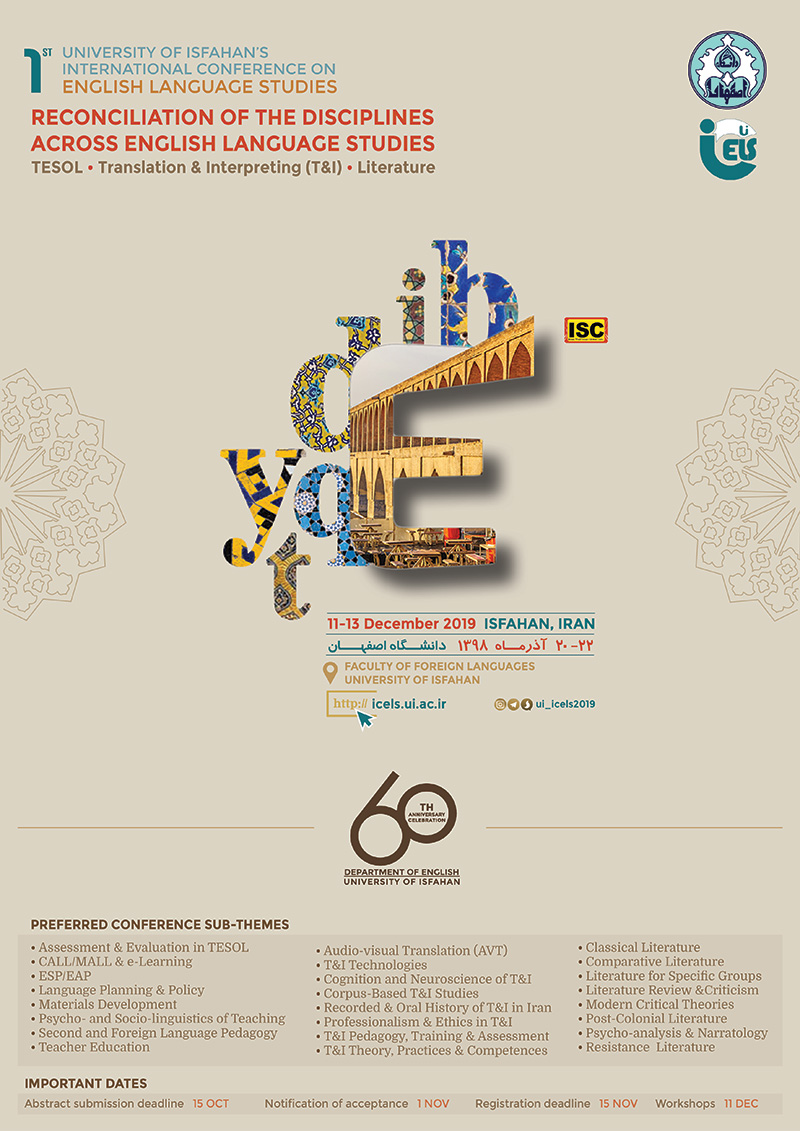
World-Creating Coulrophobia: A Possible World Analysis of King’s Novel It (1986)
نویسندگان :
Reyhane Karbasi ( University of Isfahan )
چکیده
The present article aims to analyze King’s novel It (1986) from possible worlds theory and mental space theory to shed light on how coulrophobia makes readers and even the trauma characters themselves create a possible world, and how they comprehend this narrative through their mental projection onto the stories in the reading process. The first section of the analysis identifies and discusses the various kinds of worlds built through fear of a clown in different situations. These created worlds include the mental world and the sub-worlds. The second section of the analysis takes on board the way the author makes use of the mental ability of fictional characters to create terms and expressions to take the reader into the story and place him among his fictional characters in Derry which is a fictional town and a part of Stephen King s fictional Maine topography. Thus, the study makes attempts to examine the reader’s mind in the process of reading King’s fiction psychologically: i.e. his pursuit of varying systems without losing track of the plot; his reading of the characters’ minds and entering their multilayered worlds as well as the author’s mind; and finally, his better comprehension of his own way of thinking. It can be concluded that coulrophobia is a world-making process displayed at the three level of writer, reader, and characters.کليدواژه ها
Stephen King, It (1986), Possible Worlds, Mental Space Theory, Trauma, Coulrophobiaکد مقاله / لینک ثابت به این مقاله
برای لینک دهی به این مقاله، می توانید از لینک زیر استفاده نمایید. این لینک همیشه ثابت است :نحوه استناد به مقاله
در صورتی که می خواهید در اثر پژوهشی خود به این مقاله ارجاع دهید، به سادگی می توانید از عبارت زیر در بخش منابع و مراجع استفاده نمایید:Reyhane Karbasi , 1398 , World-Creating Coulrophobia: A Possible World Analysis of King’s Novel It (1986) , اولين کنفرانس بين المللي مطالعات زبان انگليسي
دیگر مقالات این رویداد
© کلیه حقوق متعلق به دانشگاه اصفهان میباشد.
